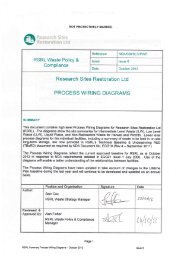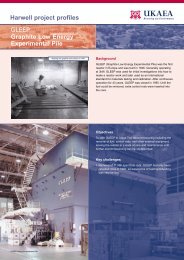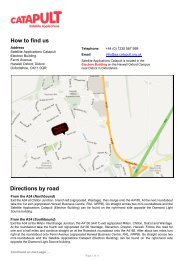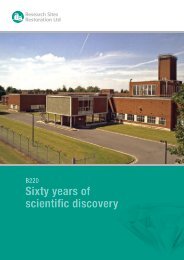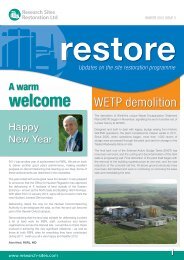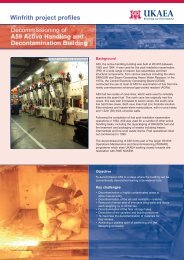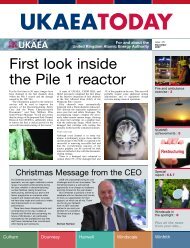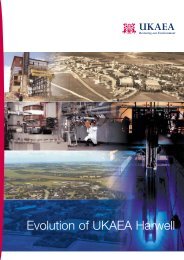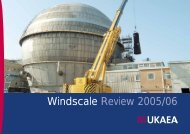RSRL Integrated Waste Strategy - Issue 5- Oct 2012.pdf
RSRL Integrated Waste Strategy - Issue 5- Oct 2012.pdf
RSRL Integrated Waste Strategy - Issue 5- Oct 2012.pdf
You also want an ePaper? Increase the reach of your titles
YUMPU automatically turns print PDFs into web optimized ePapers that Google loves.
NOT PROTECTIVELY MARKEDanalysis. If contamination is not uniform, but an “averaged” value of activity is required,then some form of systematic sampling (e.g. using a grid) and homogenisation of thesamples should be used.• DocumentationCharacterisation is an essential step at the beginning of the decommissioning processand may need to be repeated at different stages during the decommissioning. For moreinformation, refer to “Radiological Characterisation of Shutdown Nuclear Reactors forDecommissioning, IAEA Technical Report Series No. 389, IAEA, Vienna (1998).CleanAn article or substance which has had no reasonable potential to have become contaminated oractivated, or upon or within which no radioactivity other than normal background is detectablewhen suitable comprehensive measurement (monitoring and sampling) is practicable and hasbeen undertakenClearanceThe process to confirm that an article or substance is clean (free from radioactivity), or exempt(outside of the scope of regulation as radioactive material) from further control under all relevantlegislation on the basis of its radioactivityClinical <strong>Waste</strong>This is controlled waste that includes any waste which consists wholly or partly of human oranimal tissue, blood or other bodily fluids, swabs, needles, or sharp instruments. Clinical wasteis classified as industrial waste for legislative purposes however it is also subject to theHazardous <strong>Waste</strong> Regulations.Commercial <strong>Waste</strong>Commercial <strong>Waste</strong> includes wastes from premises used for a trade or business or for thepurposes of sport, recreation or entertainment e.g. general office wastes.Controlled <strong>Waste</strong>This includes industrial and commercial waste (s.75 of EPA 1990 as modified by the <strong>Waste</strong>Management Licensing Regulations 1994) both of which are subject to control by theEnvironment Agency under waste management regulations. Controlled waste can be inert,hazardous or non-hazardous.Directive <strong>Waste</strong>This is any substance or object which the producer or the person in possession of it discards orintends or is required to discard. This forms the basic definition of waste in the UK. Othercategories of waste are subsets within Directive <strong>Waste</strong>.DesignationUnder the Energy Act 2004 the Nuclear Decommissioning Authority (NDA) has responsibilityfor, amongst other things, the decommissioning of designated nuclear installations and thecleaning-up of designated nuclear sites. The designation of installations, sites and facilities issubject to the form of a direction to the NDA given by the appropriate Secretary of State.DelicensingDelicensing is referred to by the ONR as meaning “ending of the period of responsibility underThe Nuclear Installations Act”. This is defined in section 5(3) of the Nuclear Installations Actand can only happen when the HSE gives notice in writing to the licensee that it its opinionthere has “ceased to be any danger from ionising radiations from anything on the site or, as thecase may be, on that thereof”. Before delicensing any land on nuclear site, HSE must satisfyitself that delicensing is appropriate and that licensable activities are no longer being carried out<strong>RSRL</strong> IWS (<strong>Issue</strong> 5 – <strong>Oct</strong>ober 2012)118




